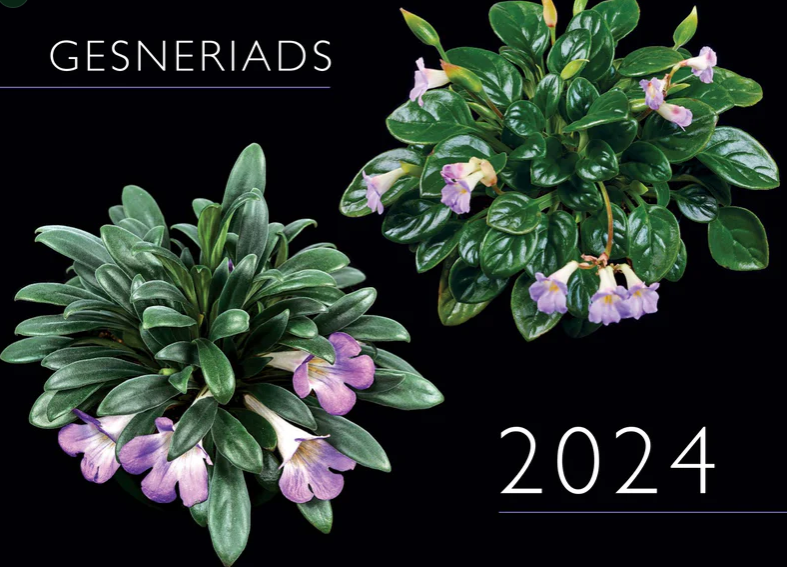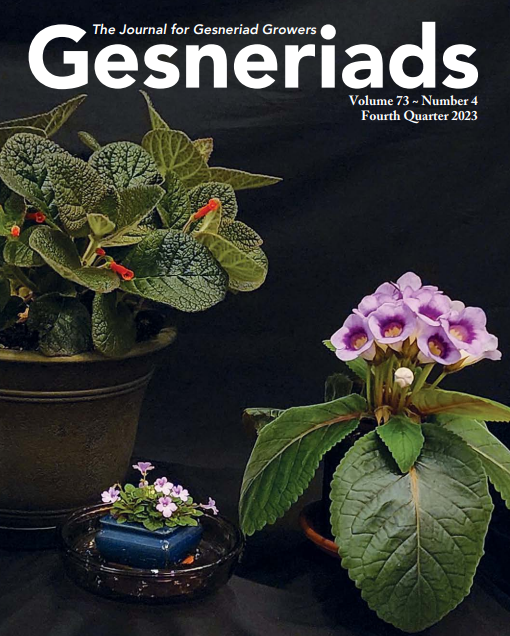Gesneriad Culture
Most gesneriads will thrive on conditions that are easy to attain in the home.
Temperature
Most gesneriads are well-suited to life in the home. Normal home temperatures are usually acceptable for gesneriads. Daytime temperatures of 65° to 75°F, with a 10° drop at night, are considered ideal for most gesneriads. Some require higher temperatures, others will accept much lower ones. Avoid hot or cold drafts, such as heating or cooling vents or open windows or doors. Overall, if you are comfortable, your plants will be also.
Water
Water your plants when the top of the soil is dry, using room temperature water. Soil should be moist but not wet and soggy; excess water must drain out the bottom of the pot. Minerals in well water or softened water may be detrimental to plants. Some gesneriads like Gesnerias require continuous amounts of water. Others, like Achimenes, become dormant if allowed to dry out even once.
Light
For healthy plants and abundant blooms, your gesneriads must have good, bright light. Some gesneriads will tolerate or do quite well in a moderately sunny window as long as the temperature isn’t too high and water requirements are met. If necessary, shade the plants with a curtain, or move them away from the window. Most gesneriads grow and bloom very well under artificial lights. Fluorescent light setups are available at many department stores and nurseries or you can construct your own. Cool white lamps are adequate, but more expensive daylight types exist that better simulate natural light. Two 40-watt lamps will be enough for a 2×4-foot growing area. Lights should be turned on for 12-16 hours per day. Lights should be hung an average of 8-16 inches above the plants.
Humidity
Most gesneriads come from humid tropical areas. An average humidity of 50% will keep your gesneriads happy, however many will bloom better with even higher humidity. To maintain this level during the dry winter heating season, place the pots on a tray filled with damp pebbles or use capillary matting. Also try draping plastic over the light fixtures and growing area to retain humidity.
Fertilizer
A constant feeding method is recommended for gesneriads, using any good 20-20-20 or 15-30-15 fertilizer. Use one-tenth to one-quarter the strength recommended on the label directions. Use this strength every time you water your plants, but once a month use plain water to flush out accumulated salts.
Repotting and Mix
As a plant grows, a larger pot may be needed to maintain a healthy root system. Periodically examine the root system by carefully removing the plant from its pot. If the root ball is very tight and overgrown, it’s time to repot into the next size pot. The growing medium must be loose and porous to retain moisture, yet provide good drainage. Use any of the prepared African violet mixes, with some perlite mixed in to lighten the soil. Some growers use custom soil mixes that they have prepared themselves. These mixes may be more compatible with their particular growing environment and watering habits.
Propagation
It is very easy to propagate gesneriads. Stem and crown cuttings (with the bottom leaves stripped off) can be placed in a covered, soil-filled pot until roots have formed. Most gesneriads can be grown from seed, but many modern hybrids will not reproduce true from seed.
- Read description of the gesneriad classification used in flower shows.
- Detailed propagation suggestions.
- Do you have a culture question that we didn’t answer here? Post your question at the Gesneriad Message Forum. Our volunteer experts will try to answer it for you!


